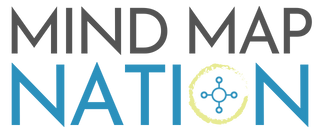Annual Planning With Mind Maps
My new year planning has two steps: Retrospective and Themes Map.
Step 1: Retrospective
Similar to the sprint retrospectives, this annual retro identifies key positive themes and negative patterns that forms the backbone of the new year Themes Map (up next). As we reflect on the major events of the past year, we should also ask ourselves these two basic questions: what felt right and what didn’t.
For me, the past year was about community building, getting back into YouTube after an 8-month hiatus, and living my personal stories. Some highlights include:
Starting the year with an Aussie puppy and finding him a better family after 6 months. (Self). I didn’t expect this to happen, yet it did.
Making the decision to move to San Francisco in March and executing on it by May. (Community). This was also a surprise.
To prep for the move, I renovated my house and rent it to a family, which effectively locks me out of my home base for at least a few years. (Self)
Quitting my job to dedicate more time and focus to learning and content creation. (Self & Content)
Leaning into honesty and vulnerability in all my friendships and relationships, which eventually led me to the best partner I never expected to meet. (Community)
Launching this newsletter to share real time learnings with you. (Content)
Compared to last year, I’m now live in a different city, with new friends, driving full speed down a new career path. Along the way, I also lost a dog and a “real” job. There were plenty of times when I felt lost, challenged, stressed, and on the verge of tears and giving up. It’s been a rough, but rewarding year.
Through it all, three themes emerged to the surface: Self, Community, and Content.
Step 2: Themes Map
The Themes Map represents what we’d like to focus on this coming year. Unlike goals, themes don’t have to be specific and measurable, yet. They’re simply the general direction that we’d like to push towards. The specificity will come if we decide to put them to action or plan them into sprints.
As with 2-week sprints, the key is to not have too many focus areas. Otherwise, we spread ourselves thin, increase the likelihood of failure, or worse, end up trading the pleasure of what we do for blind goal achievement and obligation fulfillment. Three to four themes is a good number to map, especially if they’re broad.
For me, this year will be the continuation and expansion of last year. Starting with the themes identified in the retro, I mapped all the activities and outputs that’s related to them.
During the mapping process, I discovered a flywheel effect between the themes, annotated in red arrows. Content, specifically YouTube for now, fuels my Community with new connections and conversations. These interactions then drive my Self (i.e. personal) growth and purpose, which in turn contributes to better Content. When things are going well, this personal flywheel produces incredible momentum across all the themes.
Inversely, many of the negative parts of last year came from overcommitting to one or more of these areas. This includes the times when I felt torn between spending quality time with people (Community) and being in my groove with work (Content), or sacrificing my need for stillness (Self) for constant creation and social stimulation.
Enough of these episodes back-to-back will eventually spin off the wheel and crash the car. The result is burnout, which could set me back weeks, if not years.
Therefore, the overarching theme of this year is balance, or at least the pursuit of it. Balance between work vs play, chasing opportunities vs quality time with friends, city life vs retreats into nature, resting vs doing, creating vs consuming. Just as a startup facing growing pains, I have to navigate the expansion of each theme while maintaining the whole system’s harmony.
Like many of the most meaningful questions in life, I suspect that this one will require me to live into the answers, in addition to being on top of planning and execution. Above all, though, I’m grateful to be able to share this journey with you and hope that we’ll be able to grow together this year!
Below is the video tutorial!
Make the most of your mind maps
Thanks for reading this article. If you found it useful, you can get a new mind map in your inbox every week. Epiphany is your dose of structured thinking and ordered chaos.

